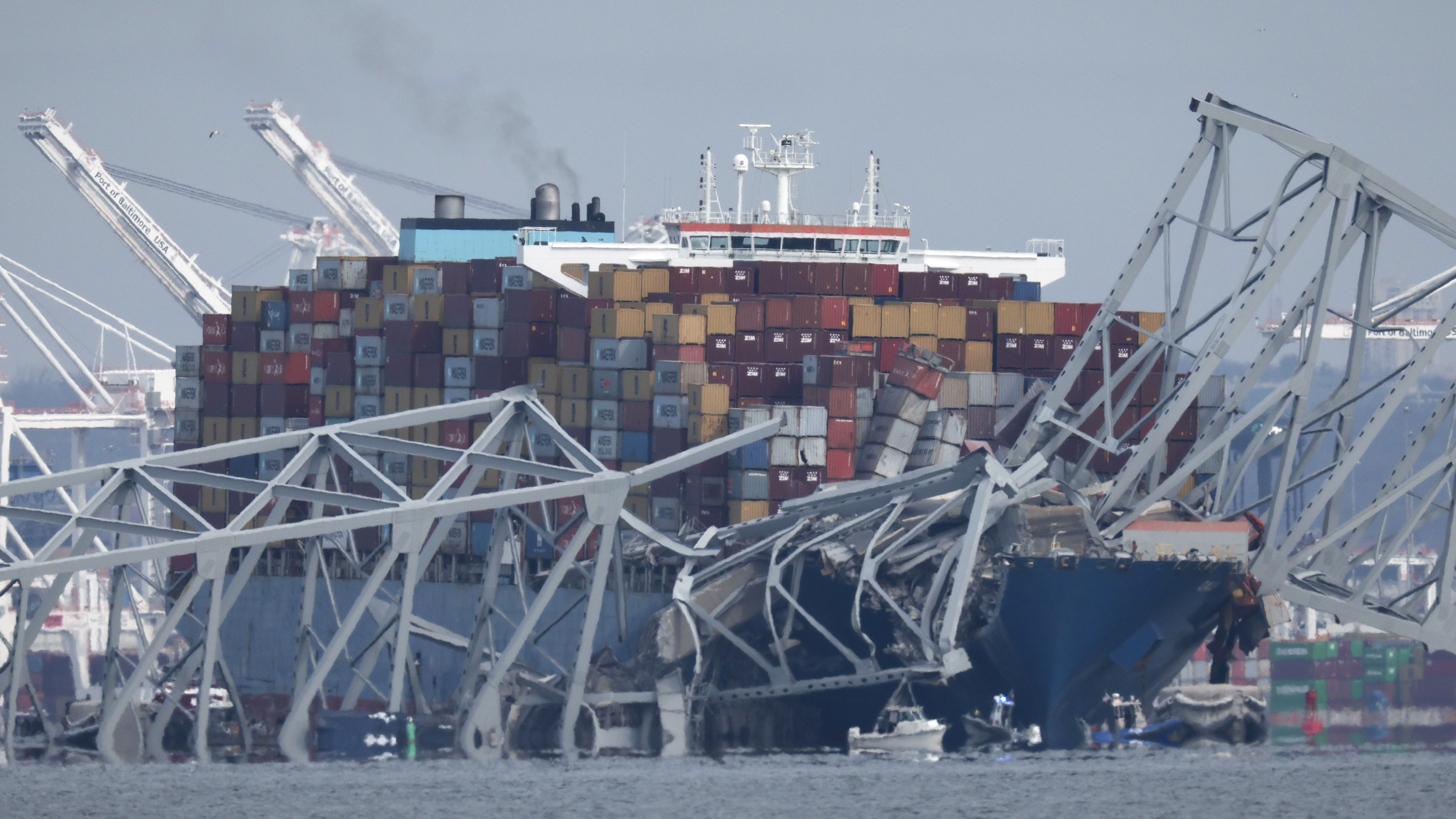
The container ship Dali after it ran into and collapsed the Francis Scott Key Bridge on Tuesday in Baltimore.
Win McNamee / Getty Images
Details are still scant on what might have caused a giant container ship to collide with Baltimore's Francis Scott Key Bridge early Tuesday, sending the span crashing into the water.
While authorities have said a "momentary loss of propulsion" could have caused the incidents, videos appear to also indicate a loss of electrical power aboard the nearly 1,000-foot ship as it careened into the structure's support.
The Singapore-flagged, Grace Ocean-owned vessel Dali was departing Baltimore harbor destined for Colombo, Sri Lanka, at 1:27 a.m. EDT Tuesday, when the collision with the bridge span occurred.
The Maritime and Port Authority of Singapore issued a statement Tuesday saying that the ship's management company, Synergy Marine Pte Ltd, reported "that just prior to the incident, the vessel, Dali had experienced momentary loss of propulsion" and that "As a result, it was unable to maintain the desired heading and collided with the Francis Scott Key bridge."
If propulsion was lost on the Dali just as the vessel was maneuvering in a tight channel in Baltimore's Patapsco River, it may well have triggered a cascade of events leading to the collision, experts tell NPR.
"Generally, believe it or not, today's ships do not have much redundancy, especially these big ships," says Basil Karatzas, the CEO of Karatzas Marine Advisors.
Matthew Collette, a professor of naval architecture at the University of Michigan notes, "there's one propeller on the ship. It is the only engine that can turn the propeller."
However, Collette speculates an electrical failure suggested by the video of the accident could have been a contributing factor. The lights on the ship could be seen switching on and off several times before it struck the bridge.
He says the engine has redundant systems, but the fuel system requires electricity to keep fuel feeding it. A ship the size of the Dali "would have either three or four independent diesel generators" to provide electricity and another above the main deck ready to "automatically start in a blackout condition," Collette says.
"But it's not instantaneous. It might take 30 seconds or 60 seconds" to start them and restore power to the ship, he says. Without electrical power, both the engine and the steering system could have been disabled in the critical moments leading to the collision, he says.
While, the steering system is triply redundant, Collette notes, each of the backups is dependent on electricity to run pumps that then pressurize the hydraulics and activate the ship's massive rudder.
At the time of the collision, an ebb tide was also running, meaning that the current would have been flowing out of the harbor — the same direction the vessel was traveling. When a tide is running with the ship, it makes maneuvering more difficult, according to Collette. Compounding that difficulty, the collision occurred just one day past a full moon, when tidal current velocities are especially strong.
In its statement, the Singapore port authority said the Dali dropped its anchor before the collision.
"It's standard practice in this situation to try to anchor the ship," to stop it, Collette says. "If they have room and they have channel depth."
"That's an evolution that's going to be taking minutes," he says.
The ship reportedly had aboard two harbor pilots — personnel with specialized knowledge of the port who assist with navigation — to assist in transiting the narrow channel leading to the Chesapeake Bay. With an engine and/or a steering failure, there is little else the crew could have done to prevent catastrophe, Karatzas says.
"I suppose they were praying just to get power," he says.
The collision also occurred at night, which could well be another factor, according to Jonathan Roach, a container market analyst at London-based Braemar ACM shipbroking.
The entrance to the harbor is "quite narrow," he says. "And, it's quite late at night. It's dark. You have to make allowances for that."
Copyright 2024 NPR. To see more, visit https://www.npr.org.